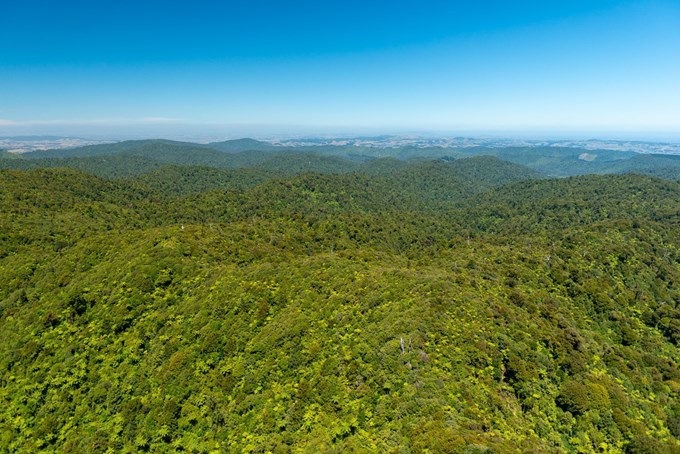A survey of kauri health began today in Te Ngāherehere o Kohukohunui / Hunua Ranges, in the hope it will confirm the forest is still free of the deadly kauri dieback disease.
It will be the third large-scale survey of the ranges, in an area where the soil-borne pathogen, Phytophthora agathidicida, the cause of kauri dieback disease, has not yet been detected.
The Hunua Ranges is a stronghold against the disease making it one of the most significant disease-free kauri forests in the country.
Planning, Environment and Parks Committee Chair, Councillor Richard Hills says the ecological value of the Hunua Ranges is immense.
“It’s more than a population of trees growing on land, it’s a population of culturally significant taonga that have survived historical land clearance and logging. It’s also home to the threatened Hochstetter’s frog species and one of the largest populations of kōkako in the country.
“Protecting these taonga is imperative.”
The survey is being carried out in partnership with the Department of Conservation (DOC) and ngā iwi mana whenua o Te Ngāherehere o Kohukohunui (Ngāi Tai ki Tāmaki, Ngāti Tamaoho, Ngāti Te Ata, Ngāti Whanaunga, Ngāti Paoa and Ngāti Tamaterā).
Biosense, the company partnering Auckland Council and ngā iwi mana whenua on the project, recognises the importance of mana whenua as kaitiaki of the ngahere. Director Lee Hills says his field team is looking forward to working alongside kaimahi during the field survey.
The area to be surveyed will include the forested area of the Hunua Ranges encompassing Auckland Council regional parks, public conservation land and a few neighbouring private properties.
The survey will combine mapping of the kauri population from aerial imagery and findings and data gathered from the 2021 Waitākere Survey to understand kauri health in the Hunua Ranges.
Seven hundred kauri will be surveyed; 500 selected at random, and 200 chosen based on risk. Ground-based surveys recording tree health will be undertaken along with soil samples from each of the 700 trees.
“The random selection of 500 trees will give us a baseline understanding of tree health and whether the pathogen is present or absent. The further sample of 200 risk-based trees will maximise our ability to detect the pathogen where we think it is most likely to be, if present,” says Kauri Dieback Manager, Lisa Tolich, from Auckland Council.
“This will create a cohort of monitored trees that can be consistently re-measured to understand change in tree health.
“We also aim to undertake a pilot study to see if Phytophthora agathidicida can be detected in streams, which would enable early detection surveillance for catchment areas,” she adds.
Testing of samples from soil and stream water will be carried out using more innovative and sensitive DNA-based technology that is expected to increase the chances of detecting the pathogen.
Findings from the analysis of the Kauri Health Survey are planned to be published in June 2024.


